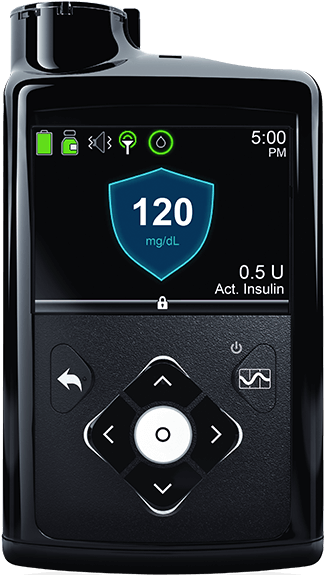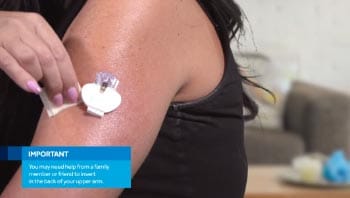MiniMed™ 670G system

Getting started for new users
Pump features
- Watch Getting to Know Your Pump

- Find Your Model Number
- Find Your Serial Number
- Changing Your Battery
- Pump Buttons
- Reading Your Device Screen
- Status Screen
- Screen Lock
- Alerts And Alarms Quick Reference
- Using the Startup Wizard
- Updating Time And Date
- Suspending And Resuming Insulin Delivery
- Saving, Restoring & Viewing Your Pump Settings
- Display Options
- Audio Options
- Airplane Mode
Basal settings
Bolus settings
Infusion sets
Meter
Continuous glucose monitoring
- Top 5 CGM Tips
- Getting Familiar with CGM

- Turning Sensor Feature On and Off
- Linking a Transmitter to Your Pump
- Linking a Replacement Transmitter To Your Pump

- High Sensor Settings
- Low Sensor Settings
- Inserting a New Sensor

- Starting a New Sensor
- Calibrating Your Sensor
- Home Screen with CGM
- Reading Your Sensor Graphs
- Disconnecting and Removing Your Sensor
- Sensor Alerts Quick Reference
- SmartGuard Low Management Suspend Quick Reference
SmartGuard™ Auto Mode
- About Auto Mode
- Before Using Auto Mode
- Turning on Auto Mode
- Auto Mode Readiness
- Auto Mode Readiness Quick Reference
- Home Screen with Auto Mode
- Safe Basal
- Block Mode When in Auto Mode
- Setting and Cancelling a Temp Target
- Auto Mode Sensor Graph
- Enter a Blood Glucose (BG) in Auto Mode
- Auto Mode Bolus
- Alert Silence
- Exiting Auto Mode
- Returning to Auto Mode
- Frequently Asked Questions

Additional resources
Top searches
- Frequently asked questions
- How do I prevent getting CGM alerts at night?
- What are the top CGM tips?
- 7 Tips for Success with SmartGuard™ Auto Mode
- How do I request a replacement sensor?
- What can I do if bleeding occurs after inserting the sensor?
- How do I order accessories, pump cases, and holsters?
- How do I prepare to travel with my pump?
Frequently viewed videos
- How to Upload Your Information to Carelink™

- How to Adjust Active Insulin Time in Auto Mode

- How to Clear Alerts and Alarms

- How to Deliver Insulin for Meals

- How to Adjust the Insulin to Carb Ratio in Auto Mode

- How to Change a Basal Rate in Manual Mode

- How to Change the Audio Settings

- Connecting the CONTOUR®NEXT LINK 2.4 Meter

- Inserting the Mio Infusion Set

- How to Deliver a Correction Bolus using Bolus Wizard









